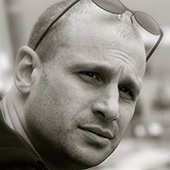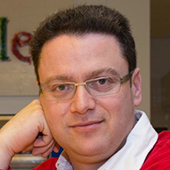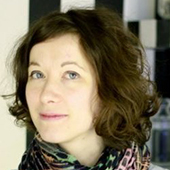For us, it was an opportunity to get a taste of both the startup and UX scenes in Israel, practice our mentoring skills, explore how to embed user experience in a startup’s existing product road map and, of course, to see Israel.
In this review, we want to share some observations and learnings, with the aim of helping other groups who want to run similar global events. We also hope that the organizers of Lean UX Machine will hold this event in Israel again, in the near future.
About Lean UX Machine
The event organization was superb. The organizers selected a group of startups that are developing a range of interesting products and services at various levels of maturity, were receptive to the idea of getting some UX advice, and whose representatives had a mix of business, product, and technology knowledge. The startups included
- Ridefrog
- ChuSoft
- bttr.me
- JoyTunes
- TabTale
- Moolta
- JajaGaming
- Ekkli
- Studyers
- Yooguide: The Funday Genie
- FaceTagram
- Wanna Share?
So, Why Lean UX Machine?
It started with “The Big Idea,” as stated on the Web site:
“User experience design introduces a challenge. If you[’ve] tried designing yourself, you know what we mean. You also know that you are not the user and that you cannot think like the user to offer great UX. It doesn’t work [that] way. We wish it [were] that simple. But you want great UX; you want Apple-like design; you want Design Thinking. We know it’s a struggle getting there. We offer help.
“At Lean UX Machine, you’ll be introduced to design principles, techniques, and methodologies that will help you figure out what customers need. You will work collaboratively with team members toward a basic design for your idea and will be coached by UX professionals. You will get first-hand experience with what Eric Ries calls validated learning and what Steve Blank means by ‘out of the building.’
“The event is open [to] startup teams with at least a founder, a product definition person, and a programmer. Each team will be assigned [to] a UX mentor for the entire event, who will provide guidance through UX research and design.”—Lean UX Machine
Criteria for Applying
The criteria or requirements for startup teams to apply to participate in the event were as follows:
- early stage
- no commitments to customers that impact the product
- at least three team members who can attend
- open to learning about user experience
- have a basic idea for a product for consumers
Participating did not require that startups already have
- a design for their product
- a registered company
- funding
Preparing for the Event
Before we arrived in Israel, the organizers briefed participating UX mentors about the goals for the event. They asked us to become familiar with the startups and brainstorm via a shared Google Doc on topics we might cover. Our goal was to introduce startup teams to design principles, techniques, and methods that would help them figure out what their customers need and work collaboratively with them toward a basic design for their product idea.
The UX mentors created a huge list of prospective ideas that would help startup teams achieve the goal of designing and refining their basic idea, including the following:
- Define your target customer.
- Conduct a usability test.
- Define the core of your product.
- Create a user research plan to involve customers and refine your idea.
- Articulate your UX vision statement—both in words and through a drawing.
- Design a key landing page.
- Identify the roles that team members take on during design—for example, the designer, who understands the underlying rationale of the design, or the storyteller. who can tell the story.
- Define what constitutes user experience success or failure.
- Articulate the emotions you want your users to experience when interacting with your product.
- Target your optimal user experience, then divide it into clear road-map milestones.
- Understand the need to create a style guide.
- Experience techniques that facilitate working as a team—for example, dot voting, collaborative sketching, and brainstorming techniques.
- Reflect on how to give feedback on a design and the importance of critique.
- Share best practices for agile UX and how you can apply a UX process, even at the fastest-running startup.
- Define user stories or use cases to help you focus on what you should explore and validate first—that is, what is the minimal viable product?
- Get a member from another startup team to join you in a walkthrough of key user journeys and see whether they understand your product’s key message.
- Prioritize features and take out as many as possible.
- Learn how to interview users and practice.
Before the event, the UX mentors completed a survey, sharing where, across the spectrum of UX skills, we felt we could best offer our expertise. The organizers also invited the UX mentors to participate in a call a few weeks before the event, during which we learned about how they would run the event, and they assigned each of us to a startup. It helped to revisit the startup list to read more about the startup with which we’d be working and begin thinking about how, as a mentor, we could help our team.



